Not everything that makes you jump is scary.
When you are sitting in your living room relaxing on your couch and something small and black crawls above you on the ceiling, then drops to the floor and skitters away, what do you do? If you are my husband or sister, you either jump onto the nearest table or grab a broom and go into attack mode (I have an absolutely hilarious story of a house centipede that visited my sister in the shower). If you are my son or me, you take the moment to follow the little guy across the floor, teach your mom how to send a video on Snapchat, and thank the eight legged arachnid for its service.
In my treks in the fields, I not only look for the pests that are harming the crops, I keep my eye out for—and find—critters that are helping the farmers. These critters are called beneficial insects [although technically, they aren’t all insects—I know, I know, it’s just a technicality, but I just had to mention it]. Most of the good guys are predators. That means they eat the pests that eat the plants. Probably not the first thing you think about when you hear The Lion King’s “Circle of Life”, but it’s a mini version of that.
Here are some critters that I have found in my travels that aid us in our production:
***************************************
Lady Beetle
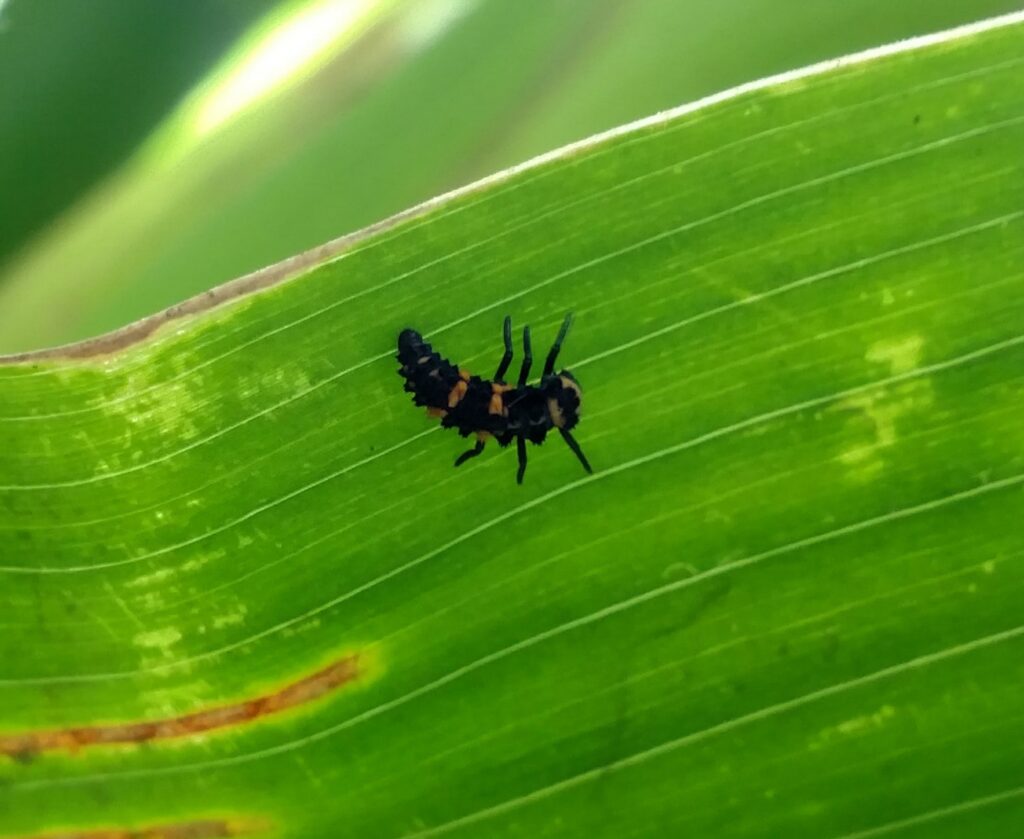
This insect is commonly called the ladybug, although it is a beetle, not a true bug. Most people recognize the different versions of the beetle, or adult form. I personally love the larvae—they look like miniature gila monsters. Both the larvae and adults love aphids, and that is usually what brings them to corn fields.
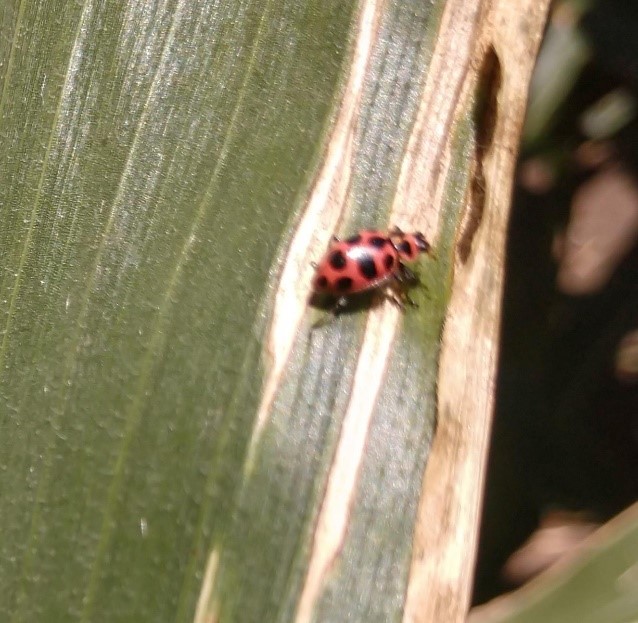
***************************************
Praying Mantis
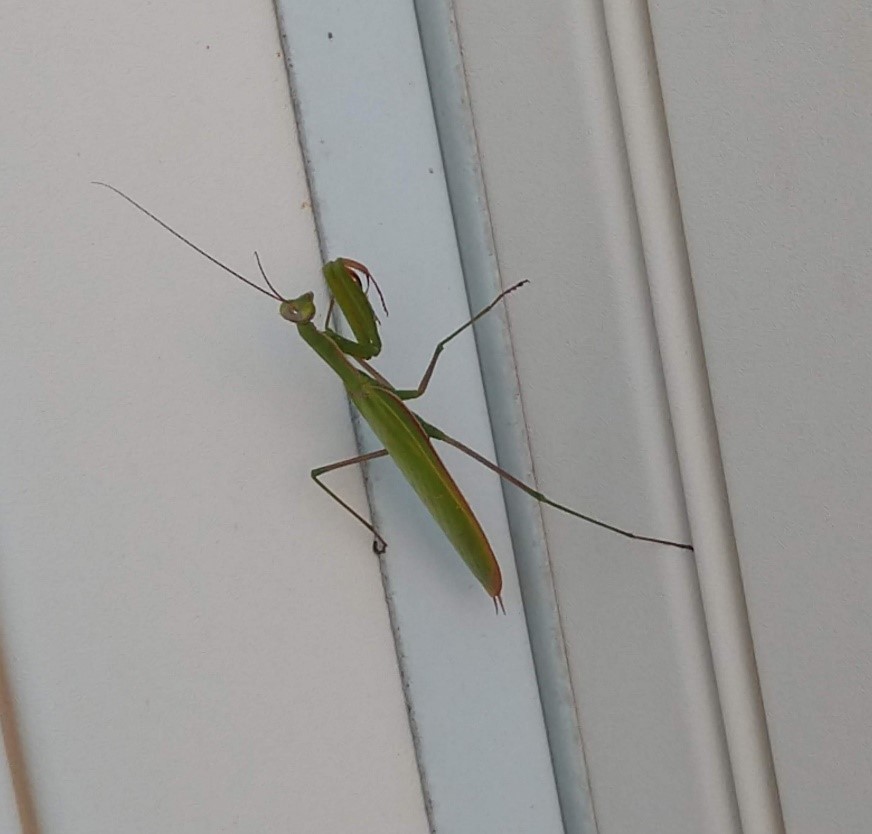
Praying mantises, or mantids, are amazing hunters. They are known for their front legs, which are held upright together until used to grab their prey, and have triangular heads held on a flexible “neck” or elongated thorax.
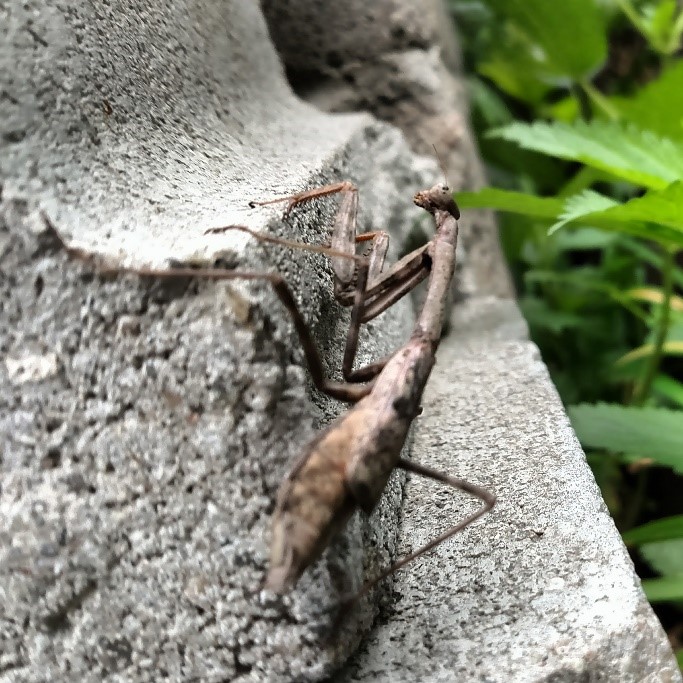
***************************************
Spiders

Spiders aren’t insects; they have two body sections and eight legs (insects have three body sections and six legs). Not all spiders build webs. Some jump on their prey, some build underground tunnels, some use water, and some even use their silk as a trip line.
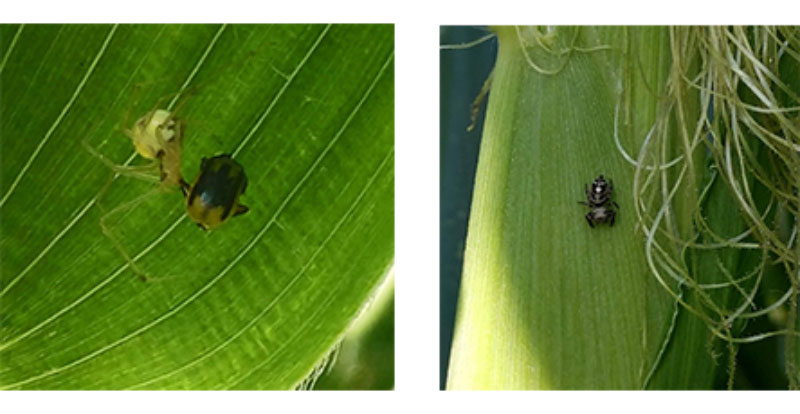
***************************************
Daddy Long Legs
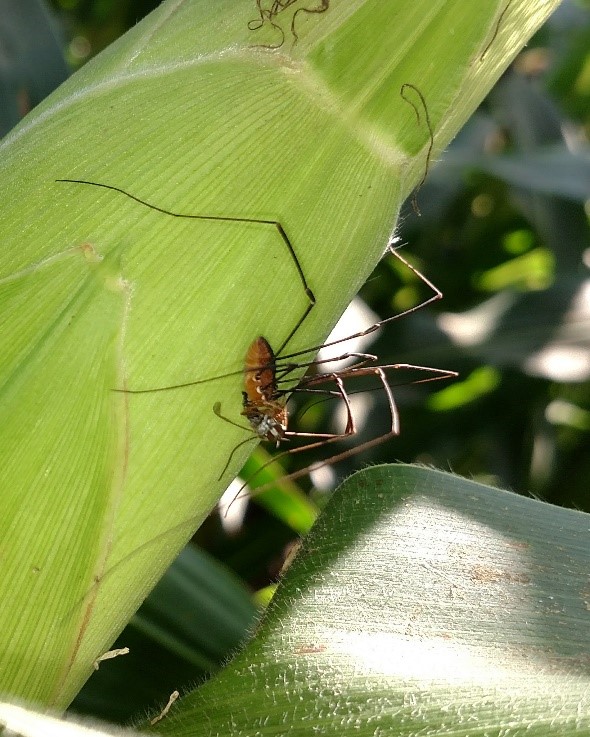
Like spiders, daddy long legs aren’t insects, but they aren’t spiders, either! They are arachnids (and so are spiders) but are called Harvestmen, so are kind of like cousins to spiders. Their mouth parts are actually closer to a crabs, so they are omnivores—eating prey and “garbage”—and their legs can break off in sections if they are threatened.
***************************************
Stink Bug
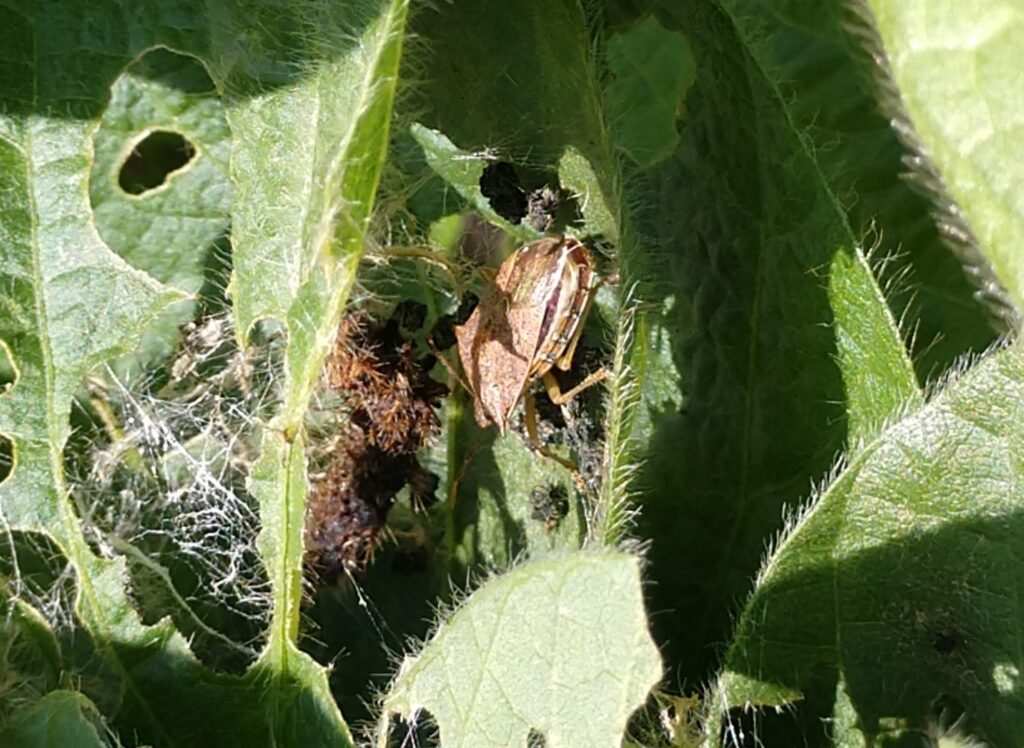
I’m sorry this photo isn’t great, but these guys just don’t pose well for a photo. Most stink bugs—and yes, they are true bugs—are pests. That is, they suck the juices out of plants. We as agronomists have treatment threshold levels for them just like any other pest. However, there are some stink bugs who are predaceous on other insects, like this one that I found snacking on a thistle caterpillar in a soybean field. The nymphs usually eat the same thing as the adults and but they may look a little different from their parents.
***************************************
Lacewing
I don’t personally have a photo of this one, and it actually isn’t the pretty adult that we have to thank for the benefits of predation. The green fly-like adult with lacy wings (called net-winged insects) feeds on nectar and pollen. The larvae, sometimes called aphid lions, are clever huntsmen who look similar to lady beetle larvae (without the orange coloring). They have been known to “dress up” in lichen and dead aphids to disguise themselves in order to get close to a meal!
***************************************
So the next time you see something that crawls and you have the instinct to jump, take a deep breath and realize that they are just doing their job, too—good guys keeping your crops safe!
Photos all courtesy of ESI Consulting. May not be used or copied without permission of author.
